7.3 Observational Learning: Look at Me
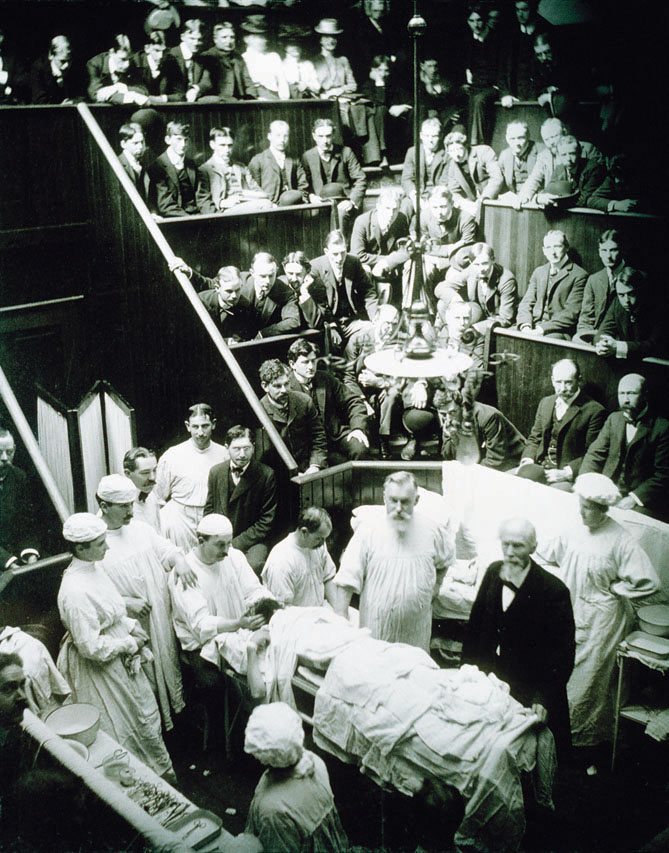
Four-
Why might a younger sibling appear to learn faster than a firstborn?
Margie’s is a case of observational learning, in which learning takes place by watching the actions of others. Observational learning challenges behaviorism’s reinforcement-
Observational Learning in Humans
What did the Bobo doll experiment show about children and aggressive behavior?
In a series of studies that have become landmarks in psychology, Albert Bandura and his colleagues investigated the parameters of observational learning (Bandura, Ross, & Ross, 1961; for additional discussion of Bandura’s work, see the Social Psychology chapter). The researchers escorted individual preschoolers into a play area, where they found a number of desirable toys that 4-
296
So what? Kids like to break stuff, and after all, Bobo dolls are made to be punched. Although that’s true, as FIGURE 7.15 shows, the degree of imitation that the children showed was startling. In fact, the adult model purposely used novel behaviors such as hitting the doll with a toy mallet or throwing it up in the air so that the researchers could distinguish aggressive acts that were clearly the result of observational learning. The children in these studies also showed that they were sensitive to the consequences of the actions they observed. When they saw the adult models being punished for behaving aggressively, the children showed considerably less aggression. When the children observed a model being rewarded and praised for aggressive behavior, they displayed an increase in aggression (Bandura, Ross, & Ross, 1963). The observational learning seen in Bandura’s studies has implications for social learning and cultural transmission of behaviors, norms, and values (Bandura, 1977, 1994).
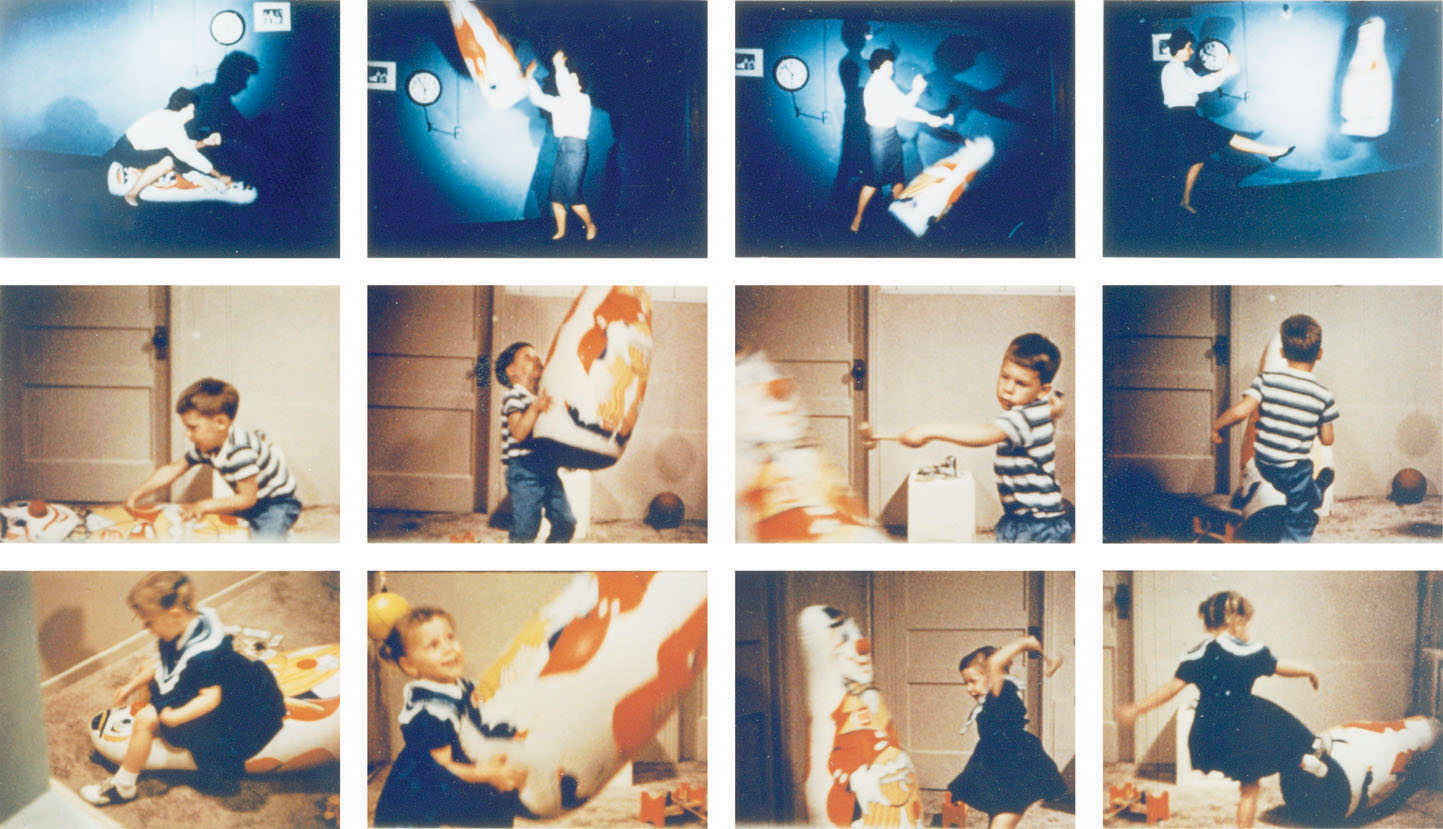
 Figure 7.15: Beating Up Bobo Children who were exposed to an adult model who behaved aggressively toward a Bobo doll were likely to behave aggressively themselves. This behavior occurred in the absence of any direct reinforcement. Observational learning was responsible for producing the children’s behaviors.
Figure 7.15: Beating Up Bobo Children who were exposed to an adult model who behaved aggressively toward a Bobo doll were likely to behave aggressively themselves. This behavior occurred in the absence of any direct reinforcement. Observational learning was responsible for producing the children’s behaviors.
Recent research with children has shown that observational learning is well suited to seeding behaviors that can spread widely across a culture through a process called a diffusion chain, where individuals initially learn a behavior by observing another individual perform that behavior, and then serve as a model from which other individuals learn the behavior (Flynn, 2008; Flynn & Whiten, 2008). Experiments investigating the operation of diffusion chains in preschool-
297
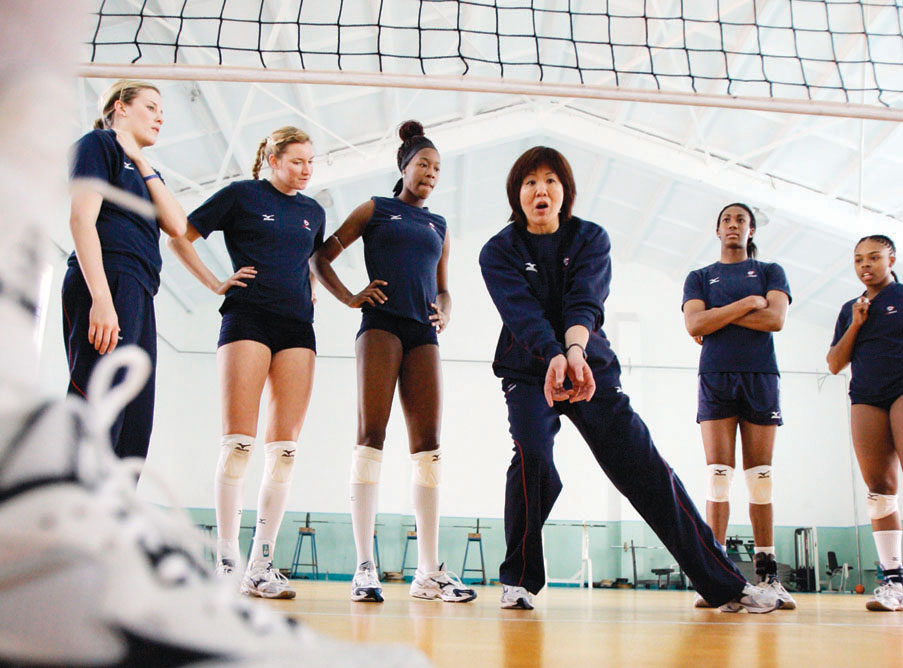
Initial studies of diffusion chains showed that behaviors such as novel tool use could be spread accurately across 10 children (Flynn & Whiten, 2008; Horner et al., 2006), and more recent work indicates faithful transmission of tool use across a diffusion chain comprised of 20 children (Hopper et al., 2010). These findings of transmission across multiple “cultural generations” underscore that observational learning is well suited for transmission through a diffusion chain, and thus a potentially powerful means of influencing our culture.
Observational learning is important in many domains of everyday life. Sports provide a good example. Coaches in just about all sports rely on observational learning when they demonstrate critical techniques and skills to players, and athletes also have numerous opportunities to observe other athletes perform. Studies of varsity and recreational level athletes in both team and individual sports indicate that they all report relying heavily on observational learning to improve their performance of critical skills in their respective sports, with varsity athletes reporting an even greater reliance on observational learning than recreational athletes (Wesch, Law, & Hall, 2007). But can merely observing a skill result in an improvement in performing that skill without actually practicing it? A number of studies have shown that observing someone else perform a motor task, ranging from reaching for a target to pressing a sequence of keys, can produce robust learning in the observer. In fact, observational learning sometimes results in just as much learning as practicing the task itself (Heyes & Foster, 2002; Mattar & Gribble, 2005; Vinter & Perruchet, 2002).
Observational Learning in Animals
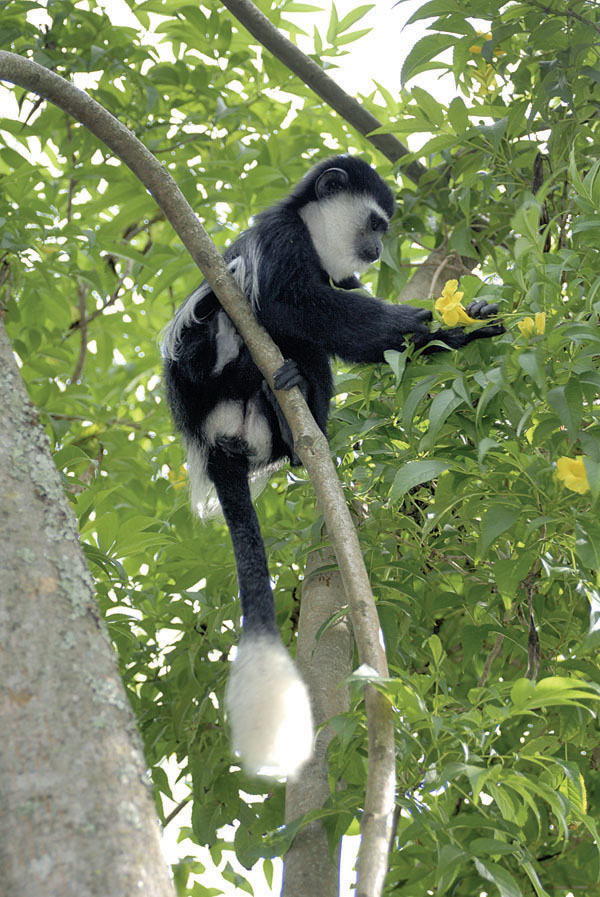
Humans aren’t the only creatures capable of learning through observing. A wide variety of species learn by observing. In one study, for example, pigeons watched other pigeons get reinforced for either pecking at the feeder or stepping on a bar. When placed in the box later, the pigeons tended to use whatever technique they had observed other pigeons using earlier (Zentall, Sutton, & Sherburne, 1996).
In an interesting series of studies, researchers showed that laboratory-
One of the most important questions about observational learning in animals concerns whether monkeys and chimpanzees can learn to use tools by observing tool use in others, which we’ve already seen can be accomplished by young children. In one of the first controlled studies to examine this issue, chimpanzees observed a model (the experimenter) use a metal bar shaped like a T to pull items of food toward them (Tomasello et al., 1987). Compared with a group that did not observe any tool use, these chimpanzees showed more learning when later performing the task themselves. However, the researchers noted that the chimpanzees hardly ever used the tool in the exact same way that the model did. So, in a later experiment, they introduced a novel twist (Nagell, Olguin, & Tomasello, 1993). In one condition, a model used a rake in its normal position (with the teeth pointed to the ground) to capture a food reward, which was rather inefficient because the teeth were widely spaced and the food sometimes slipped between them. In a second condition, the model flipped over the rake, so that the teeth were pointed up and the flat edge of the rake touched the ground–a more effective procedure for capturing the food. Both groups who observed tool use performed better when trying to obtain the food themselves than did a control group who did not observe a model use the tool. However, the chimpanzees who observed the more efficient procedure did not use it any more often than did those who observed the less efficient procedure; the two groups performed identically. By contrast, 2-
298
What are the cognitive differences between chimpanzees raised among humans versus raised in the wild?
The chimpanzees in these studies had been raised by their mothers in the wild. In a related study, the researchers asked whether chimpanzees who had been raised in environments that also included human contact could learn to imitate the exact actions performed by a model (Tomasello, Savage-
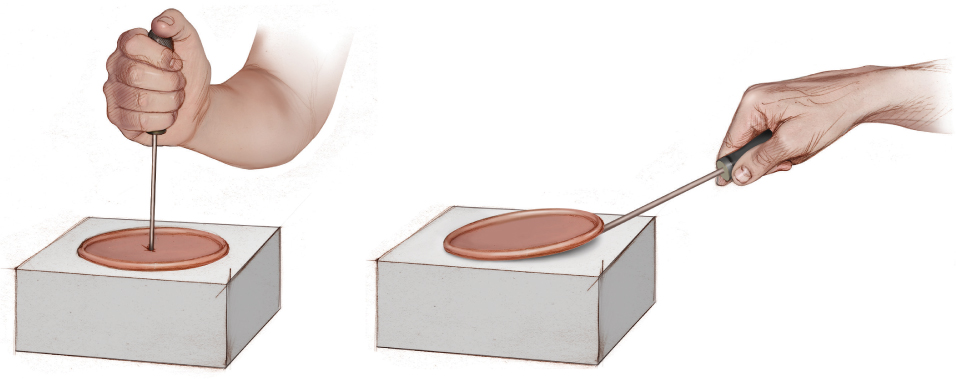
 Figure 7.16: Observational Learning Monkeys who had been reared in the wild by their mothers or by human families either (left) watched a model poke a screwdriver through a hole in the center of a box to obtain a food reward or (right) pry open the lid. Both groups showed some evidence of observational learning, but the human-
Figure 7.16: Observational Learning Monkeys who had been reared in the wild by their mothers or by human families either (left) watched a model poke a screwdriver through a hole in the center of a box to obtain a food reward or (right) pry open the lid. Both groups showed some evidence of observational learning, but the human-However, more recent research has found something similar in capuchin monkeys, who are known for their tool use in the wild, such as employing branches or stone hammers to crack open nuts (Boinski, Quatrone, & Swartz, 2000; Fragaszy et al., 2004) or using stones to dig up buried roots (Moura & Lee, 2004). Fredman and Whiten (2008) studied monkeys who had been reared in the wild by their mothers or by human families in Israel as part of a project to train the monkeys to aid quadriplegics. A model demonstrated two ways of using a screwdriver to gain access to a food reward hidden in a box. Some monkeys observed the model poke through a hole in the center of the box, whereas others watched him pry open the lid at the rim of the box (see FIGURE 7.16). A control group did not observe any use of the tool. Both mother-
299
Although this evidence implies that there is a cultural influence on the cognitive processes that support observational learning, the researchers noted that the effects on observational learning could be attributed to any number of influences on the human-
Neural Elements of Observational Learning
Observational learning involves a neural component as well. As you read in the Neuroscience and Behavior chapter, mirror neurons are a type of cell found in the brains of primates (including humans). Mirror neurons fire when an animal performs an action, such as when a monkey reaches for a food item. More importantly, however, mirror neurons also fire when an animal watches someone else perform the same specific task (Rizzolatti & Craighero, 2004). Although this “someone else” is usually a fellow member of the same species, some research suggests that mirror neurons in monkeys also fire when they observe humans performing an action (Fogassi et al., 2005). For example, monkeys’ mirror neurons fired when they observed humans grasping for a piece of food, either to eat it or to place it in a container.
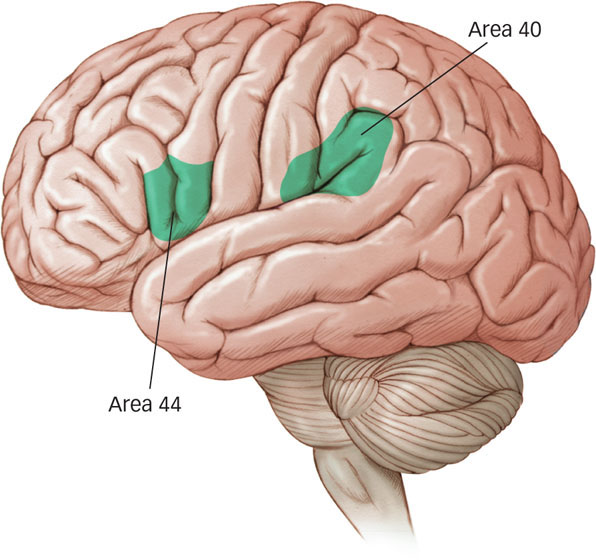
 Figure 7.17: Mirror Neuron System Regions in the frontal lobe (area 44) and parietal lobe (area 40) are thought to be part of the mirror neuron system in humans.
Figure 7.17: Mirror Neuron System Regions in the frontal lobe (area 44) and parietal lobe (area 40) are thought to be part of the mirror neuron system in humans.
Mirror neurons, then, may play a critical role in the imitation of behavior as well as the prediction of future behavior (Rizzolatti, 2004). Mirror neurons are thought to be represented in specific subregions in the frontal and parietal lobes, and there is evidence that individual subregions respond most strongly to observing certain kinds of actions (see FIGURE 7.17). If appropriate neurons fire when another organism is seen performing an action, it could indicate an awareness of intentionality or that the animal is anticipating a likely course of future actions. Although the exact functions of mirror neurons continue to be debated (Hickok, 2009), both of these elements–rote imitation of well-
What do mirror neurons do?
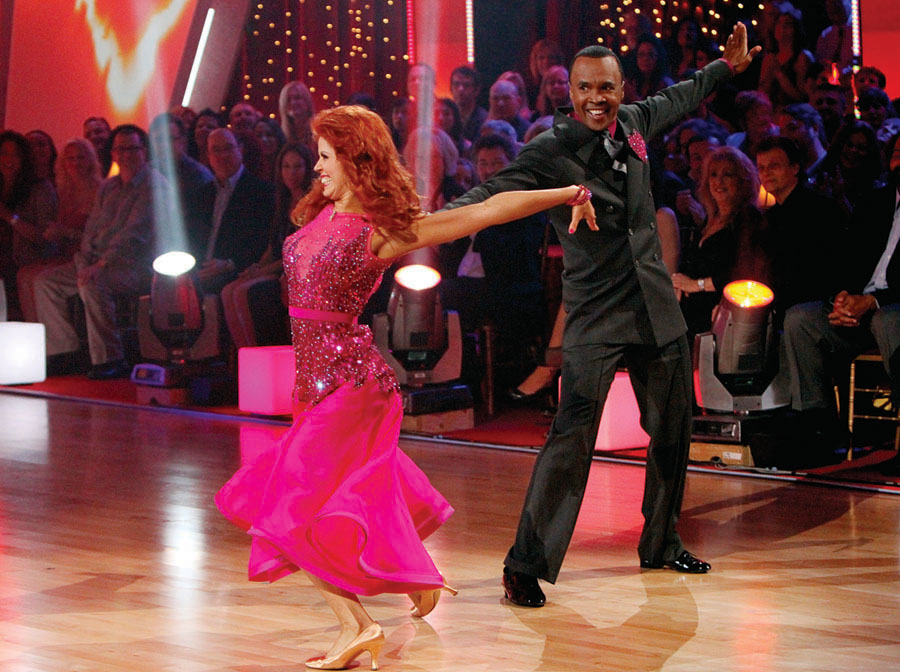
Studies of observational learning in healthy adults have shown that watching someone else perform a task engages some of the same brain regions that are activated when people actually perform the task themselves. Do you consider yourself a good dancer? Have you ever watched someone who is a good dancer–a friend or maybe a celebrity on Dancing with the Stars–in the hopes of improving your own dance floor moves? In a recent fMRI study, participants performed two tasks for several days prior to scanning: practicing dance sequences to unfamiliar techno-
Analysis of the fMRI data revealed that in comparison with the untrained sequences, viewing the previously danced or watched sequences recruited a largely similar brain network, including regions considered to be part of the mirror neuron system, as well as a couple of brain regions that showed more activity for previously danced than watched videos. The results of a surprise dancing test given to participants after the conclusion of scanning showed that performance was better on sequences previously watched than on the untrained sequences, demonstrating significant observational learning, but was best of all on the previously danced sequences (Cross et al., 2009). So, while watching Dancing with the Stars might indeed improve your dancing skills, practicing on the dance floor should help even more.
300
Related evidence indicates that observational learning of some motor skills relies on the motor cortex, which is known to be critical for motor learning. For example, when participants watch another individual engage in a task that involves making a complex reaching movement, significant observational learning occurs (Mattar & Gribble, 2005). To examine whether the observational learning depends on the motor cortex, researchers applied transcranial magnetic stimulation (TMS) to the motor cortex just after participants observed performance of the reaching movement (as you learned in the Neuroscience and Behavior chapter, TMS results in a temporary disruption in the function of the brain region to which it is applied). Strikingly, applying TMS to the motor cortex greatly reduced the amount of observational learning, whereas applying TMS to a control region outside the motor cortex had no effect on observational learning (Brown, Wilson, & Gribble, 2009).
These findings indicate that some kinds of observational learning are grounded in brain regions that are essential for action. When one organism patterns its actions on another organism’s behaviors, learning is speeded up and potentially dangerous errors (think of Margie, who won’t burn her hand on the stove) are prevented.
 Observational learning is based on cognitive mechanisms such as attention, perception, memory, or reasoning. But observational learning also has roots in evolutionary biology and for the most basic of reasons: It has survival value. Observational learning is an important process by which species gather information about the world around them.
Observational learning is based on cognitive mechanisms such as attention, perception, memory, or reasoning. But observational learning also has roots in evolutionary biology and for the most basic of reasons: It has survival value. Observational learning is an important process by which species gather information about the world around them. Observational learning has important social and cultural consequences, as it appears to be well suited for transmission of novel behaviors across individuals. Chimpanzees and monkeys can benefit from observational learning, especially those reared in settings that include humans.
Observational learning has important social and cultural consequences, as it appears to be well suited for transmission of novel behaviors across individuals. Chimpanzees and monkeys can benefit from observational learning, especially those reared in settings that include humans. The mirror neuron system becomes active during observational learning, and many of the same brain regions are active during observation and performance of a skill. Observational learning is closely tied to parts of the brain that are involved in action.
The mirror neuron system becomes active during observational learning, and many of the same brain regions are active during observation and performance of a skill. Observational learning is closely tied to parts of the brain that are involved in action.